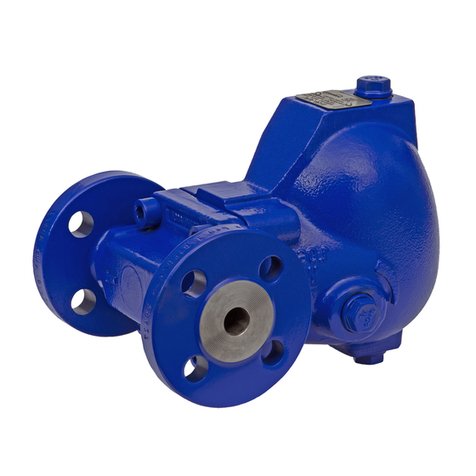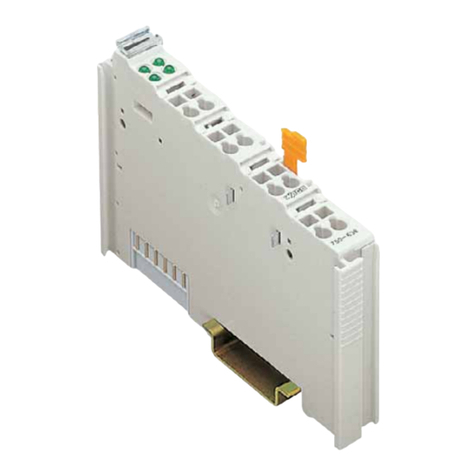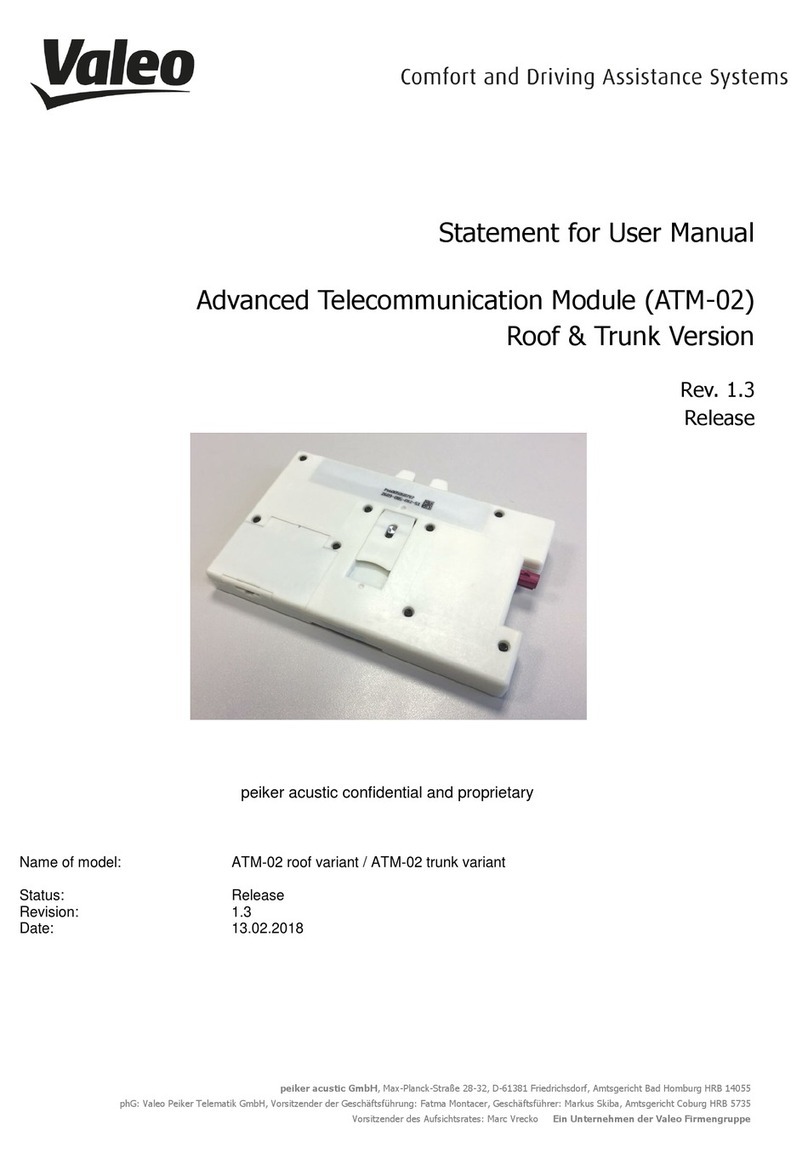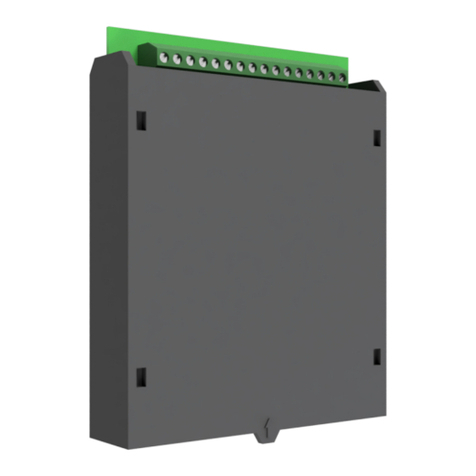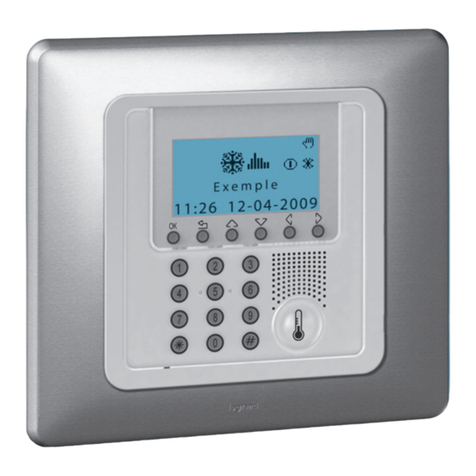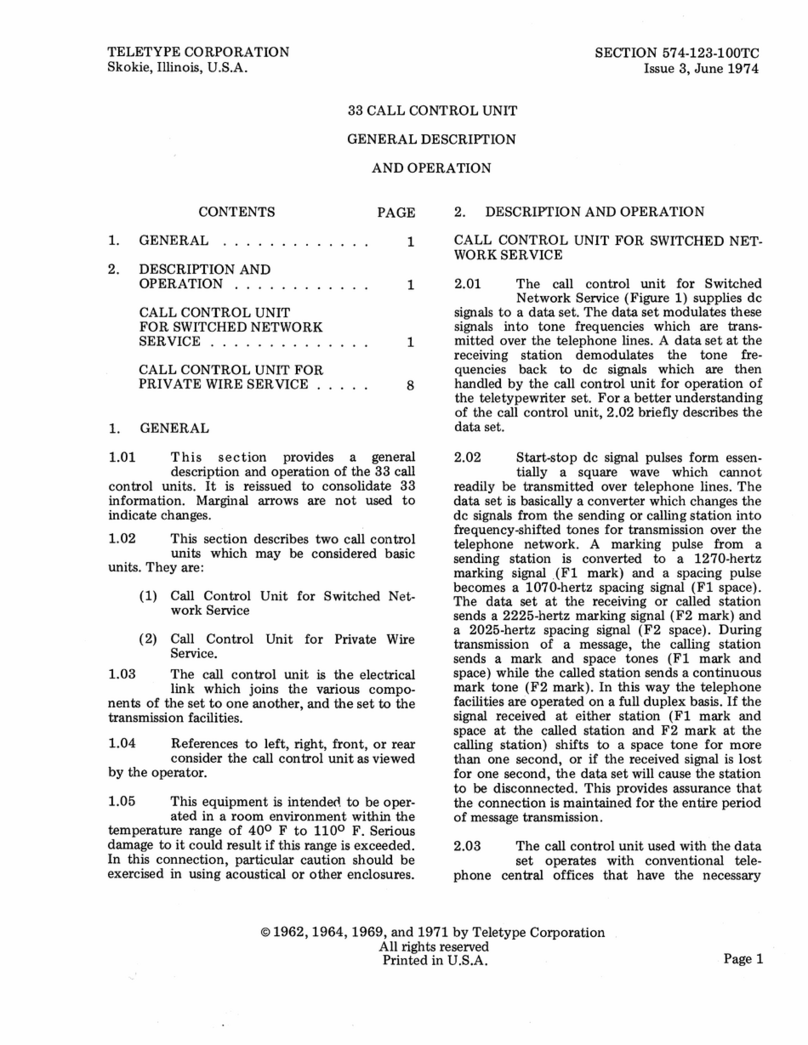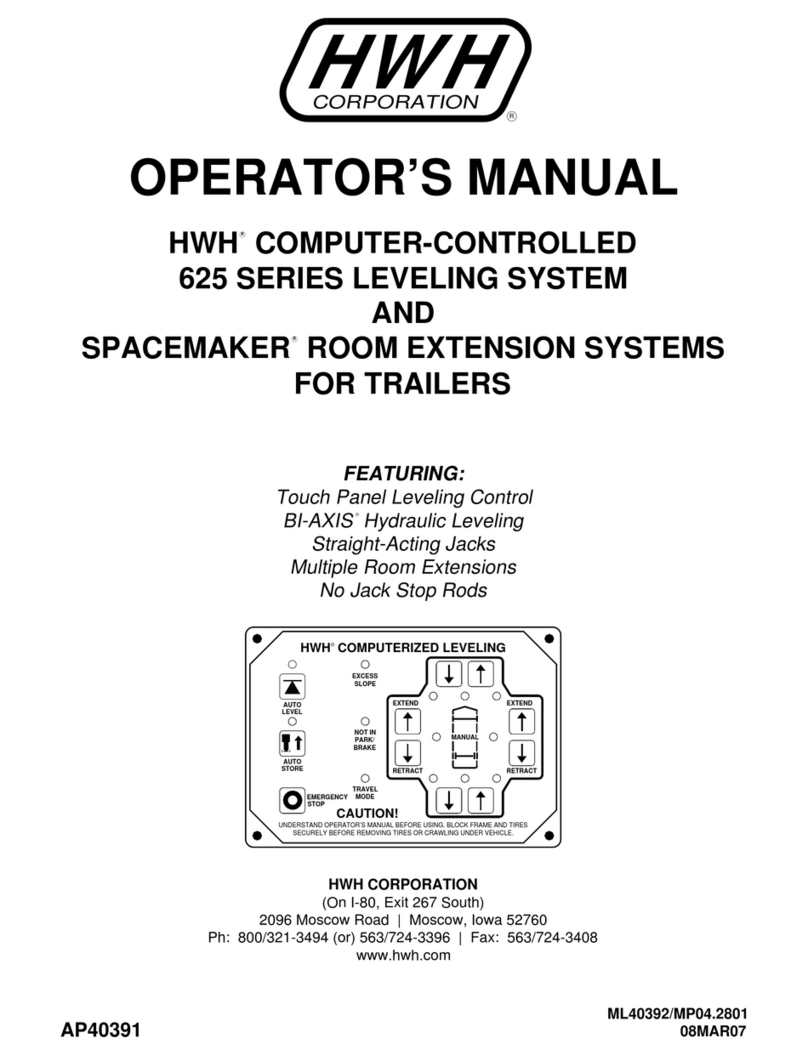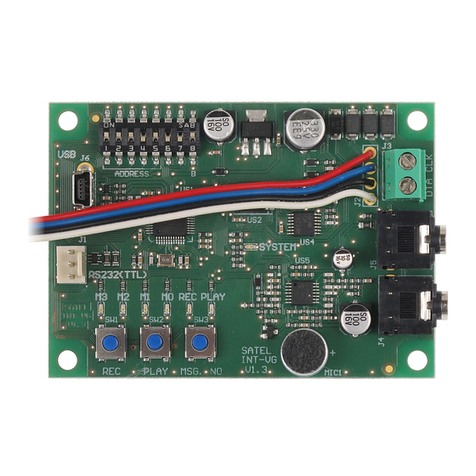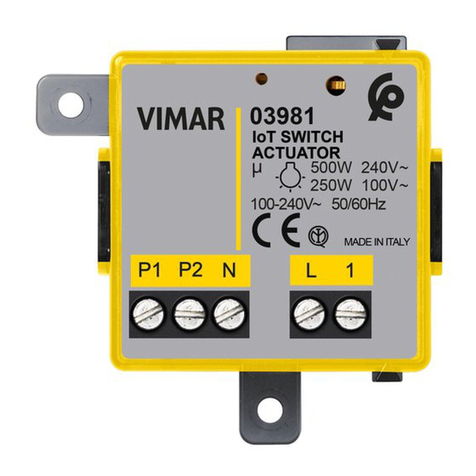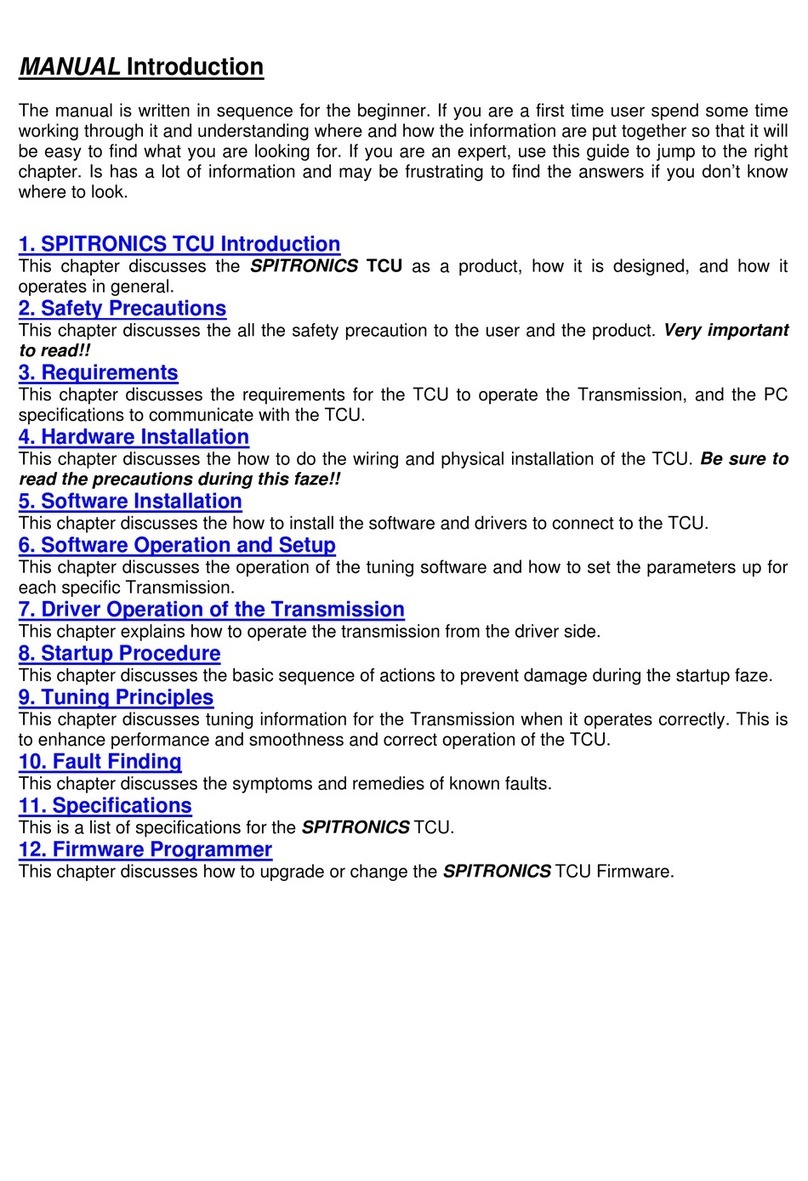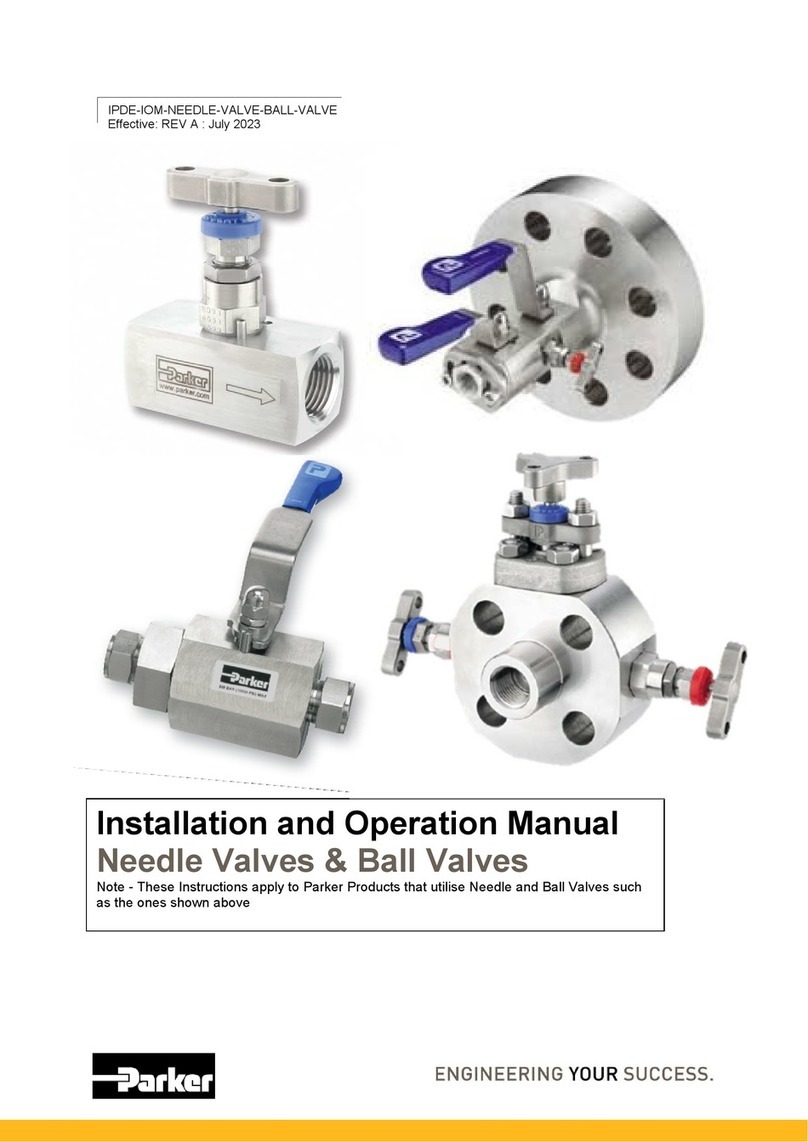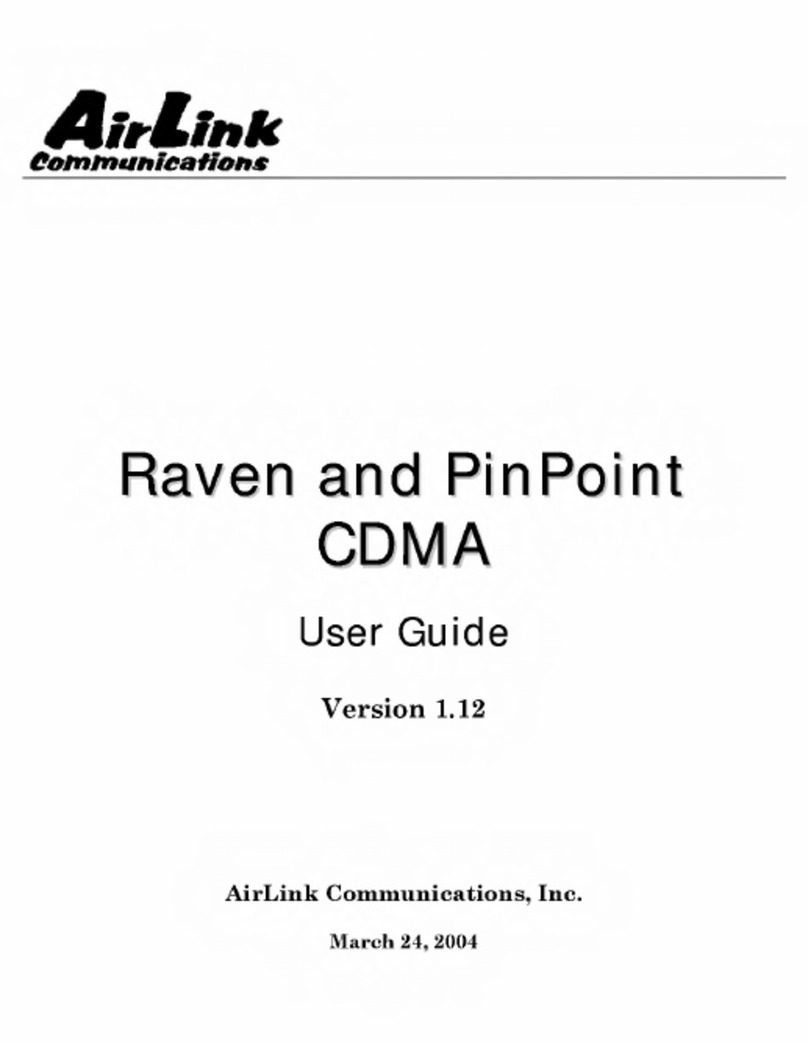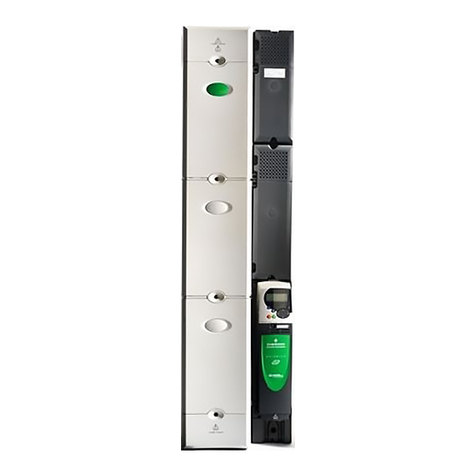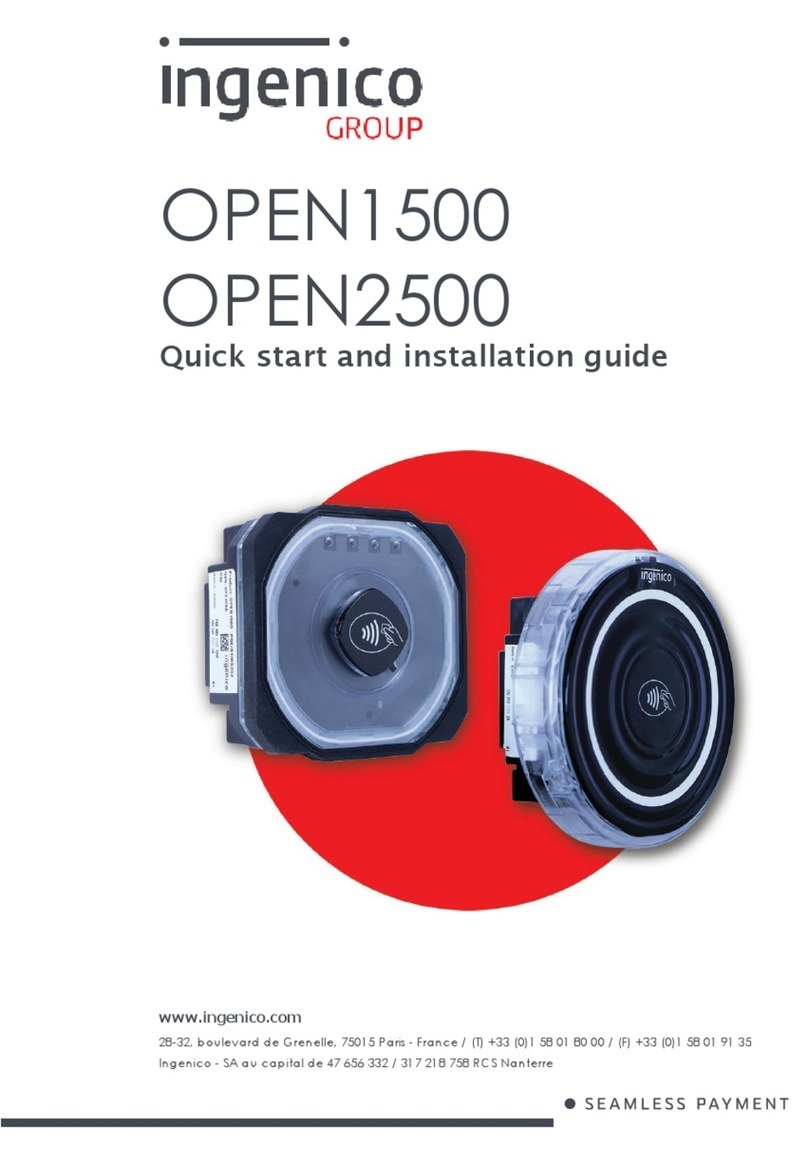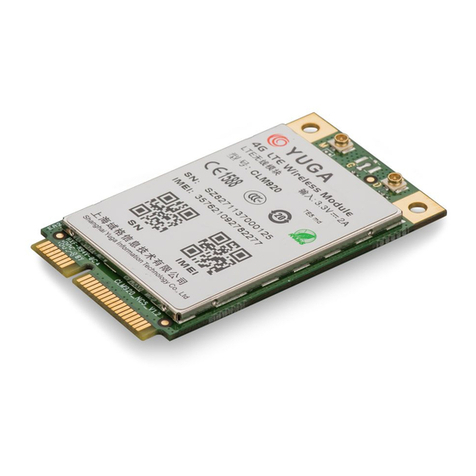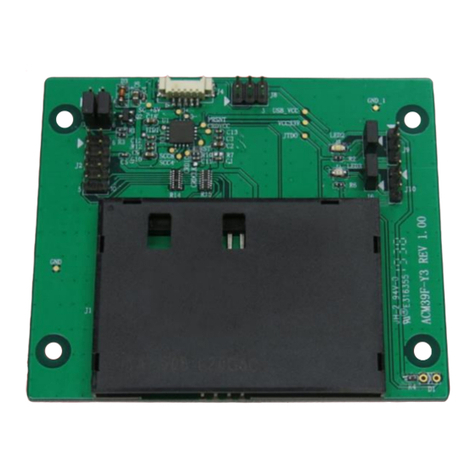GESTRA QuickEM User manual

Drain Module
QuickEM
QuickEM
Control
Original Installation Instructions
818941-03

Contents
Foreword ............................................................................................................................................3
Availability.............................................................................................................................................3
Applicable documents............................................................................................................................3
Formatting features in the document ......................................................................................................3
Safety..................................................................................................................................................4
Use for the intended purpose .................................................................................................................4
Basic safety notes .................................................................................................................................4
Information on property damage or malfunctions .....................................................................................5
Qualification of personnel.......................................................................................................................5
Protective gear......................................................................................................................................5
Typographic features of warning notes....................................................................................................6
Formatting features for warnings of property damage ..............................................................................6
Description .........................................................................................................................................6
Scope of supply and equipment specification ..........................................................................................6
Application of European Directives........................................................................................................10
Task and function................................................................................................................................10
Storing and transporting the equipment.........................................................................................11
Storing the equipment .........................................................................................................................11
Transporting the equipment .................................................................................................................11
Mounting and connecting the equipment.......................................................................................12
Preparing installation ...........................................................................................................................12
Connecting the equipment ...................................................................................................................12
Operation ..........................................................................................................................................13
After operation .................................................................................................................................14
Removing external dirt deposits............................................................................................................14
Maintaining the equipment...................................................................................................................15
Servicing the equipment and installing spare parts ................................................................................15
Troubleshooting ...............................................................................................................................16
Putting the equipment out of operation ..........................................................................................16
Removing harmful substances..............................................................................................................16
Removing the equipment .....................................................................................................................16
Re-using equipment after storage.........................................................................................................16
Disposing of the equipment..................................................................................................................17
Technical data..................................................................................................................................18
Dimensions and weights ......................................................................................................................18
Pressure & temperature ratings............................................................................................................22
Manufacturer's declaration.............................................................................................................23

3
Foreword
This installation & operating manual will help you
use the following types of drain modules safely and
efficiently for their intended purpose:
QuickEM
QuickEM Control
These drain modules will be called equipment in
this document.
This installation & operating manual is intended for
anyone commissioning, using, operating, servicing,
cleaning or disposing of this equipment and, in
particular, for professional after-sales service
technicians, qualified personnel and authorised and
trained staff.
All of these persons must read and understand the
content of this installation & operating manual.
Following the instructions given in this installation &
operating manual helps avoiding danger and
increases the reliability and service life of the
equipment. Please note that in addition to the
instructions given in this installation & operating
manual you must also observe all locally applicable
rules and regulations concerning the prevention of
accidents as well as approved safety guidelines for
good professional practice.
Availability
Keep this installation & operating manual together
with the plant documentation for future reference.
Make sure that this installation & operating manual
is available to the operator.
The installation & operating manual is part of the
equipment. Please hand over this installation &
operating manual when selling the equipment or
passing it on.
Applicable documents
For more information and further instructions
regarding the components built into the equipment
refer to their individual installation & operating
manuals. These documents are to be regarded as
part of this installation & operating manual and
must be kept in a safe place for future reference.
Please hand over these documents when selling the
equipment or passing it on.
Formatting features in the
document
Certain text elements of this installation & operating
manual feature a specific typographic design. You
can easily distinguish the following text elements:
Standard text
Cross-reference
Listing
Sub-items in listings
Steps for action.
Here you will find additional useful
information and tips serving to assist you
in using the
equipment to its fullest
potential.

4
Safety
Use for the intended purpose
The following types of equipment are designed to
discharge condensate from steam systems:
QuickEM
QuickEM Control
QuickEM Control is also designed for monitoring
steam traps for banking-up of condensate and loss
of live steam.
Use measuring electrodes NRG 16-27 and NRG 16-
28 only in conjunction with suitable analysing
devices (e. g. GESTRA test station NRA 1-3).
Suitable analysing devices are specified in the
operating manuals of the respective measuring
electrodes.
The equipment must only be used within the
allowable pressure and temperature limits and only
if the chemical and corrosive influences on the
equipment are taken into account.
Correct use includes compliance with the
instructions given in this installation & operating
manual, in particular obedience to all safety
instructions.
Any other use of the equipment is considered to be
improper.
In particular any kind of refitting or modification of
the equipment without prior approval of the
manufacturer is regarded as improper use.
Note that the equipment is also used incorrectly if
the materials of the equipment are not suitable for
the fluid.
Basic safety notes
Explosion hazard
Risk of explosion caused by static electricity if
the equipment is improperly mounted in
potentially explosive areas!
Observe all safety standards for fire and
explosion prevention prescribed for the place of
installation.
The equipment and its component parts must
only be mounted or removed by qualified
personnel.
Make sure that any static electricity is
discharged.
Risk of severe injuries
The equipment is under pressure during
operation and may be hot. Before carrying out
any work on the equipment make sure that the
following requirements are met:
The pipes must be depressurized (0 bar).
The fluid must be completely removed from
the pipes and the equipment.
During work on the equipment the
installation must be switched off and
protected against unauthorised or
unintended activation.
The pipes and the equipment must have
cooled down to room temperature (approx.
20 °C).
If the equipment is used in contaminated areas
there is a risk of severe injuries or death caused
by harmful substances in or on the equipment.
Before working on the equipment make sure
that it is completely decontaminated. Always
wear the protective clothing prescribed for
contaminated areas when working on the
equipment.
The equipment must only be used with fluids
that do not attack the material and the gaskets
and sealings of the equipment. Otherwise leaks
may occur and hot or toxic fluid could escape.
The equipment and its component parts must
only be mounted or removed by qualified
personnel. A qualified person must be

5
acquainted with and experienced in the
following:
Making pipe connections.
Selecting suitable lifting gear and
understanding the rules for its safe use.
Working with dangerous (contaminated, hot
or pressurized) fluids.
If the admissible temperature and pressure
limits are exceeded the equipment may be
destroyed and hot or pressurized fluid may
escape. Make sure that the equipment is only
operated within the admissible service range
and limits.
For more information on pressure and
temperature ratings see name plate or refer to
the respective operating manual of the
component part.
Risk of minor injuries
Sharp edges on internals present the danger of
cuts to hands. Always wear industrial gloves
when servicing the equipment.
If the support of the equipment during
installation is insufficient the equipment might
fall down, thereby causing bruises or injuries.
Make sure the equipment is safely held in place
during installation and cannot fall down. Wear
protective safety footwear.
Risk of bruises or injuries if you touch moving
parts inside the equipment. Never touch any
moving parts! Wear sturdy protective gloves.
Information on property damage
or malfunctions
Malfunctions will occur if the equipment is
installed in a wrong position or with the flow
pattern in the opposite direction of the fluid flow.
This may result in damage to the equipment or
the installation. Observe the flow direction arrow
on the equipment body and make sure it
matches the direction of the fluid flow in the
pipe when installing the equipment.
If the material is unsuitable for the fluid,
increased wear may occur and fluid may
escape. Make sure that the material is suitable
for the fluid used in your installation.
Qualification of personnel
A qualified person must be acquainted with and
experienced in the following:
the pertinent on-site rules and regulations for
preventing fire and explosions as well as
industrial safety regulations
working on pressure equipment
making pipe connections
working with dangerous (hot or pressurized)
fluids
lifting and transporting loads
observing all notes and instructions in this
installation & operating manual and the
applicable documents
Protective gear
The operator must ensure that anyone working on
the equipment must wear the required protective
clothing and safety gear stipulated for the site of
installation. The protective clothing must be suitable
for the used media and must protect the wearer
against safety and health hazards associated with a
particular job to be carried out at the site of
installation. Protective clothing & equipment must
provide protection from potential hazards, in
particular from injuries to:
Head
Eyes
Body
Hand
Feet
Hearing
Note that this list is not exhaustive. The operator
must establish personal protective equipment
guidelines and specify any additional protective
gear that is required if the worker is exposed to a
specific risk at the site of installation.

6
Typographic features of warning
notes
DANGER
Notes with the heading DANGER warn
against imminent dangerous situations that
can lead to death or serious injuries.
WARNING
Notes with the heading WARNING warn
against possibly dangerous situations that
could lead to death or serious injuries.
CAUTION
Notes with the heading CAUTION warn
against dangerous situations that could
lead to minor or moderate injuries.
Formatting features for warnings
of property damage
Attention!
This information warns of a situation
leading to property damage.
Description
Scope of supply and equipment
specification
Scope of supply
Our equipment is delivered packed and ready for
assembly.
The pipe connections are provided with caps to
protect them against contamination.
Following items are supplied:
the equipment
this installation & operating manual
the installation & operating manuals of all
components built into the equipment
Note that neither any parts required for installing
the equipment (such as counter flanges, screws,
bolts or gaskets) nor the test station necessary for
evaluating the measurement results of QuickEM
Control are part of the delivery.
Equipment specification
The drain module consists of several components
and combines all necessary functions in one item of
equipment:
a steam trap for discharging condensate
shut-off valves on either side of the trap for
isolating the trap
a non-return valve prevents the fluid from
flowing back
a branch line for bypassing the fluid if the steam
trap is shut off
a sightglass for visual indication of flow and
steam trap performance
a measuring electrode (only fitted in QuickEm
Control) for checking steam trap performance
This installation manual shows equipment
mounted with bypass in horizontal position.
The text will indicate if the equipment can
also be installed in a vertical position.

7
QuickEM
Item
no.
Designation
1
Shut-off valve
2
Sightglass
3
Steam trap
1
Item
no.
Designation
4
Non-return valve
5
Bypass
6
Direction of flow
1 The following types of steam trap (3) are
possible:
UNA
BK (not shown)
MK (not shown)
The equipment can be installed in horizontal
position. A special version for vertical installation
with downward flow is optionally available.

8
QuickEM Control
Item
no.
Designation
1
Shut-off valve
3
Steam trap1
4
Non-return valve
Item
no.
Designation
5
Bypass
6
Direction of flow
7
Measuring electrode (attached to steam
trap)
1
The following types of steam trap (3) are
possible:
BK 45 with measuring electrode NRG 16-
28 (horizontal and vertical position of
installation)
MK 45 with measuring electrode NRG 16-
28 (horizontal and vertical position of
installation)
UNA 4 (DN40, DN50) with measuring
electrode NRG 16-27 (horizontal position
of installation, not shown)

9
QuickEM Control with test chamber
Item
no.
Designation
1
Shut-off valve
3
Steam trap
1
4
Non-return valve
5
Bypass
Item
no.
Designation
6
Direction of flow
7
Measuring electrode
8
Test chamber
1
The following types of steam trap (3) are
possible:
UNA 1 (DN15–25) with measuring
electrode NRG 16-27 (horizontal position
of installation)
BK 15 with measuring electrode NRG 16-
27 (horizontal position of installation, not
shown)
MK 25 with measuring electrode NRG 16-
27 (horizontal position of installation, not
shown)

10
Name plate
The equipment does not have a nameplate. The
nameplates of the individual components are
described in the respective installation & operating
manuals.
Application of European Directives
Pressure Equipment Directive
The equipment conforms to this directive (see
"Manufacturer's Declaration" section) and can be
used for the following media:
Fluids of group 2
The CE markings of the individual components are
described in the respective installation & operating
manuals.
ATEX Directive
The equipment does not have its own potential
ignition source and is not subject to this directive
(see "Manufacturer's Declaration" section).
When installed, static electricity may arise between
the equipment and the connected system.
When used in potentially explosive atmospheres,
the plant manufacturer or plant operator is
responsible for discharging or preventing possible
static charge.
If it is possible for medium to escape, e.g. through
actuating mechanisms or leaks in threaded joints,
the plant manufacturer or plant operator must take
this into consideration when dividing the area into
zones.
QuickEM Control
QuickEM Control equipment must NOT be used in
potentially explosive areas.
Task and function
Drain modules QuickEM and QuickEM Control are
designed to discharge condensate from steam
systems: For this purpose the drain module is
equipped with a steam trap.
QuickEM Control is also designed for monitoring
steam traps for banking-up of condensate and loss
of live steam. For this purpose the equipment is
fitted with a measuring electrode. The measuring
electrode is either mounted in the steam trap or a
test chamber. An additional test station, e. g. Test
Station NRA 1-3, is required for evaluating the
readings of the measuring electrode.
Two shut-off valves allow you to isolate the
equipment so that you can carry out maintenance
or service work on individual components.
The fluid can flow through the bypass when these
shut-off valves are closed. During normal operation
the shut-off valve in the bypass line can be closed
to prevent the fluid from flowing through the
bypass.

11
Storing and transporting the
equipment
Attention!
Equipment can be damaged if stored or
transported improperly
.
Close all openings with the sealing
plugs or covers supplied with the
equipment or use similar sealing
covers.
Protect the equipment against
moisture and corrosive atmospheres.
Please contact the manufacturer if the
specified transport and/or storage
requirements cannot be met.
Storing the equipment
Please observe the following items when storing
the equipment:
Do not store the equipment for more than 12
months.
Use the supplied sealing plugs or other suitable
seal caps in order to seal off all openings of the
equipment.
Protect the sealing surfaces and contact areas
against mechanical damage.
Protect the equipment and all components
against hard shocks and impacts.
Store the equipment only in closed rooms that
meet the following environmental conditions:
Air humidity below 50 %, not condensing
Indoor air: clean, salt-free and non-corrosive
Temperature 5–40 °C.
Make sure that all these requirements are
always met when storing the equipment.
Please contact the manufacturer if you cannot
comply with the recommended storage
conditions.
Transporting the equipment
CAUTION
Do not drop the equipment. If
it falls down
it may cause bruises and injuries.
To transport and mount the equipment
safely use suitable lifting gear.
Connect a noose strap of the lifting
gear to each end connection.
Provide adequate support for the
equipment during transport and
installation.
Wear protective safety footwear.
Lightweight equipment may be transported and
mounted without using any lifting gear.
To lift equipment the weight of which exceeds
approx. 25 kg, you need the help of a second
person or suitable lifting gear.
Your physical strength and on-site regulations and
conditions determine what weight can be lifted and
if support is required.
Attention!
Shut
-off valves may get damaged if the
handwheels are used for lifting the
equipment.
Connect the lifting gear only to the
end connections.
Meet the requirements for storage also when
transporting the equipment.
Prior to transport seal off connections with
sealing plugs.
If you do not have the sealing plugs
su
pplied with the equipment use
appropriate seal caps to seal off the
connections.
For short distances (only a few metres) you can
transport the equipment unpacked.

12
When transporting the equipment over larger
distances use the original packaging.
If you do not have the original packaging use a
box that protects the equipment adequately
against corrosion and physical damage.
For a short period of time the equipment
may be transported even if the
temperature is below 0
°C, provided that
the equipment is completely empty and
dry.
Mounting and connecting the
equipment
Preparing installation
Take the equipment out of the transport
packaging.
Check the equipment for transport damage.
Contact the manufacturer if you detect any kind
of shipping damage.
When supplied by the factory, the connections may
be sealed off with sealing plugs.
Remove sealing plugs before mounting the
equipment.
Keep the sealing plugs and the packing for
further use.
DANGER
Personnel working on pipes are exposed to
safety risks and may suffer severe injuries,
poisoning or even loss of life.
Make sure that no hot or hazardous
fluid is in the equipment or the pipes.
Make sure that the pipes upstream
and downstream of the equipme
nt are
depressurised.
Make sure that the installation is
switched off and protected against
unauthorised or unintended activation.
Make sure that the equipment and the
pipes have cooled down to room
temperatures.
Wear protective clothing that is
suitable
for the fluid and, if necessary,
wear protective gear.
For more information on suitable protective clothing
and safety gear refer to the safety data sheet of the
fluid in question.
Drain pipes until they are empty.
Switch the installation off and protect it against
unauthorised or unintended re-activation.
Connecting the equipment
DANGER
Incorrectl
y connected equipment can
cause fatal accidents or severe injuries.
Make sure that only qualified skilled
personnel connect the equipment to
pipes.
Make sure that the flow arrows on the
valves match the direction of flow in
the pipe.
Specialist personnel must be highly qualified and
fully experienced in making pipe connections for the
respective type of end connection.

13
CAUTION
Do not drop the equipment. If it falls down
it may cause bruises and injuries.
To transport and mount the equipment
safely use suitable lifting gear.
Connect a noose strap of the lifting
gear to each end connection.
Provide adequate support for the
equipment during transport and
installation.
Wear protective safety footwear.
Lightweight equipment may be transported and
mounted without using any lifting gear.
To lift equipment the weight of which exceeds
approx. 25 kg, you need the help of a second
person or suitable lifting gear.
Your physical strength and on-site regulations and
conditions determine what weight can be lifted and
if support is required.
Attention!
Equipment will be damaged if the end
connections are undersized.
Make sure that the connections are
strong and rigid enough to support the
weight of the equipment and to
withstand the forces that occur during
operation.
Make sure that the pipe system of the plant is
clean.
Make sure that the equipment is free from
foreign matter.
Please observe the space required for servicing the
individual components. For information on the
required withdrawal distance see the respective
operating manual for the component in question.
Observe all specified withdrawal distances when
mounting the equipment.
Make sure that the flow arrow matches the
direction of the fluid flow in the pipe.
The direction of flow is indicated by the arrow on
the valves.
Connect the end connections of the equipment
properly to the pipes.
Make sure that the equipment is safely mounted
and that all connections are made correctly.
In equipment type QuickEM Control connect the
measuring electrode to the terminal strips of the
test station.
Operation
Before commissioning the equipment make sure
that:
all flanged connections of the equipment are
tightly bolted together and leakproof.
the measuring electrode is mounted correctly
and in accordance with the wiring diagram.
All necessary specifications are indicated in the
installation & operating manual of the respective
component.
To remove contamination in the pipes you can use
the bypass for rinsing. To do so proceed as follows:
Close the shut-off valve upstream and
downstream of the steam trap.
Slowly open the shut-off valve of the bypass.
The medium flows now through the bypass, rinsing
off any contaminants.
Rinse until no more impurities come out.
Close the shut-off valve of the bypass.
Completely open the shut-off valve upstream
and downstream of the steam trap.
The equipment is now ready for operation.
During operation no adjustments or service work on
the equipment is required.
For more information on the operation of the
individual components refer to the respective
installation & operating manuals.

14
Caution
Risk of injuries if you touch parts of the
installation during operation without
wearing suitable protective clothing.
Always wear protective clothing if you
touch parts of the installation during
operation.
Observe and follow all instructions on
protective clothing stated in all
applicable documents and the safety
data sheet for the fluid used.
Note that the handwheels of the shut-off valves in
particular may be hot during operation.
After operation
DANGER
If fluid escapes personnel may suffer
severe injuries, poisoning or even loss of
life.
After working on the equipment make
sure that all connections and valves
are tight.
Make sure that the gaskets of the
body are leakproof.
DANGER
Personnel working on pipes are exposed to
safety risks and may suffer severe injuries,
poisoning or even loss of life.
Make sure that no hot or hazardous
fluid is in the equipment or the pipes.
Make sure that the pipes upstream
and down
stream of the equipment are
depressurised.
Make sure that the installation is
switched off and protected against
unauthorised or unintended activation.
Make sure that the equipment and the
pipes have cooled down to room
temperatures.
Wear protective clothing that is
suitable for the fluid and, if necessary,
wear protective gear.
For more information on suitable protective clothing
and safety gear refer to the safety data sheet of the
fluid in question.
Attention!
Frost damage may occur when the
installation is shut down.
Drain the equipment if ambient
temperatures below 0 °C (frost) are to
be expected.
Removing external dirt deposits
To remove dirt deposits rinse the equipment
with fresh water and wipe it with a clean, lint-
free cloth.
To remove any persistent residues use a
cleaning agent that is suitable for the material
and carefully wipe the equipment with a clean,
lint-free cloth.

15
Maintaining the equipment
The equipment does not require any particular
maintenance.
For more information on servicing and maintenance
of the individual components refer to the respective
installation & operating manuals.
Malfunctions may occur if the equipment is
used with different types of condensate
:
The following condensates in particular
cause problems:
very oily condensates
condensates that resinify or become
gummy
condensates that recrystallize
condensates that contain solid matter.
In these cases check the equipment at
regular intervals for cont
amination and, if
necessary, remove dirt deposits.
To reduce contamination we recommend
installing a sedimentation vessel or a dirt
pocket arrangement upstream of the
equipment.
Servicing the equipment and
installing spare parts
No spare parts are available for the equipment. For
information on spare parts for the individual
components refer to the respective installation &
operating manuals.

16
Troubleshooting
Problem
Cause
Remedy
Fluid escapes (equipment is
leaking).
The equipment or the body is
damaged.
Replace the equipment with a new one.
Fluid escapes (equipment is
leaking).
A gasket is damaged.
Replace the gasket with a new one.
Clean gasket seating surfaces.
Fluid escapes (equipment is
leaking).
The connections are not tight. Provide the connections with leakproof
seals.
For information on troubleshooting refer to the
installation & operating manuals of the individual
components.
If faults occur that are not listed above or cannot
be corrected, please contact our Technical
Service or authorized agency in your country.
Putting the equipment out of operation
Removing harmful substances
Remove all residues from the equipment.
For the disposal of all residues observe the
pertinent legal regulations concerning waste
disposal.
Removing the equipment
Store the equipment as described on page 11.
Re-using equipment after storage
Observe the following instructions if you want to
remove the equipment and use it again somewhere
else:
Make sure that the equipment is free of any
fluid residues.
Make sure that all connections are in good
condition and leak-free.
Use the equipment only for its intended purpose
and the service conditions for which it was
specified.

17
Disposing of the equipment
Caution
Environmental damage may be caused by
poisono
us fluid residues.
Before disposing of the equipment
make sure that it is clean and free of
fluid residues.
For the disposal of all materials
observe the pertinent legal regulations
concerning waste disposal.
The equipment is made from the following
materials:
Materials used in QuickEM, steel version
Component part
Material
Pipes and fittings
P235GH
Gaskets PSM graphite with
perforated steel insert
Hexagon-head bolts,
nuts
5.6/5.2
Materials used in QuickEM, stainless steel
version
Component part
Material
Pipes and fittings
1.4571
Gaskets
PSM graphite with
perforated steel insert
Hexagon-head bolts,
nuts
A2/70
For information on materials used for the individual
components refer to the respective installation &
operating manuals.

18
Technical data
Dimensions and weights
QuickEM with bypass
Steam trap type:
BK
MK
UNA
DN
PN
DN15
Dimensions [mm]
A
PN16
821
PN40
841
B
all
200
Weight [kg]
PN16
21
21
26
–
PN40
25
25
–
27
DN20
Dimensions [mm]
A
all
908
B
all
200
Weight [kg]
PN16
27
27
33
–
PN40
31
31
–
34
DN25
Dimensions [mm]
A
all
988
B
all
200
Weight [kg]
PN16
45
45
51
–
PN40
49
49
–
53
DN40
Dimensions [mm]
A
all
1,290
B
all
300
Weight [kg]
PN16
83
83
97
–
PN40
82
82
–
96
DN50 Dimensions [mm]
A
all
1,452
B
all
300
Weight [kg]
PN16
102
103
115
–
PN40
101
102
–
114

19
QuickEM without bypass
Steam trap type:
BK
MK
UNA
DN
PN
DN15
Dimensions [mm]
A
PN16
564
PN40
584
Weight [kg]
PN16
11
11
16
–
PN40
14
14
–
17
DN20
Dimensions [mm]
A
all
627
Weight [kg]
PN16
14
14
20
–
PN40
17
17
–
21
DN25
Dimensions [mm]
A
all
670
Weight [kg]
PN16
16
16
23
–
PN40
20
20
–
23
DN40
Dimensions [mm]
A
all
870
Weight [kg]
PN16
50
50
64
–
PN40
49
49
–
63
DN50
Dimensions [mm]
A
all
968
Weight [kg]
PN16
59
59
73
–
PN40
58
58
–
72

20
QuickEM Control with bypass
Steam trap type:
BK
MK
UNA
DN
PN
DN15 Dimensions [mm]
A
all
689
689
841
841
B
all
250
250
200
200
Weight [kg]
PN16
21
21
27
–
PN40
21
21
–
27
DN20
Dimensions [mm]
A
all
756
756
908
908
B
all
250
250
200
200
Weight [kg]
PN16
27
27
33
–
PN40
27
27
–
33
DN25
Dimensions [mm]
A
all
826
826
988
988
B
all
300
300
200
200
Weight [kg]
PN16
45
45
51
–
PN40
45
45
–
51
DN40
Dimensions [mm]
A
all
1,320
1,320
1,090
1,090
B
all
400
Weight [kg]
PN16
81
81
88
–
PN40
80
80
–
87
DN50
Dimensions [mm]
A
all
1,452
1,452
1,222
1,222
B
all
400
Weight [kg]
PN16
100
101
103
–
PN40
99
100
–
102
This manual suits for next models
1
Table of contents
Other GESTRA Control Unit manuals
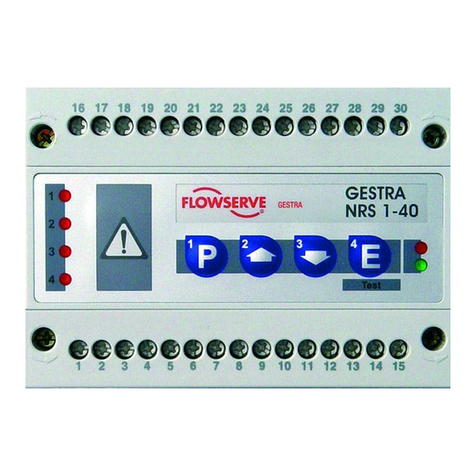
GESTRA
GESTRA NRS 1-40.1 User manual
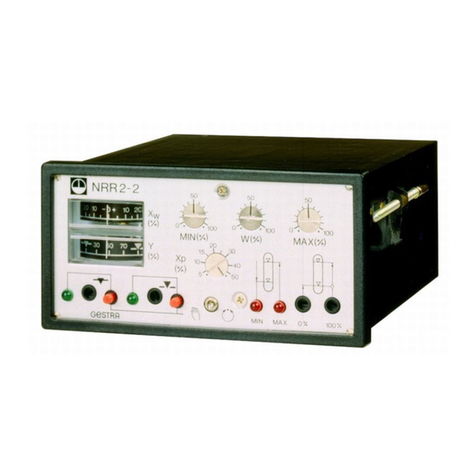
GESTRA
GESTRA NRR 2-2e Quick guide
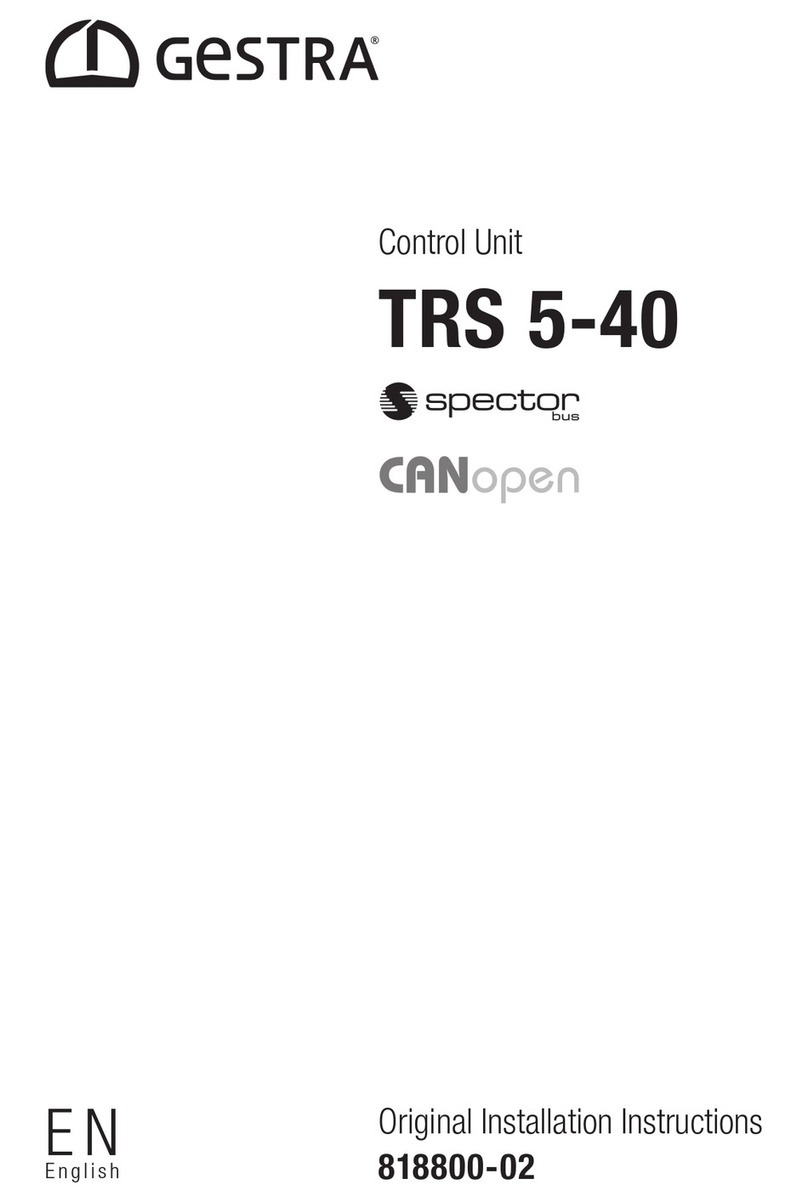
GESTRA
GESTRA TRS 5-40 User manual
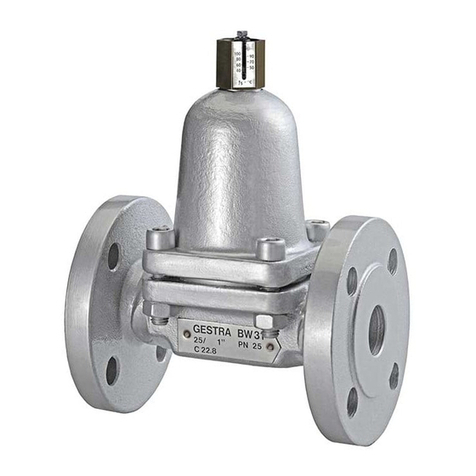
GESTRA
GESTRA BW 31A User manual
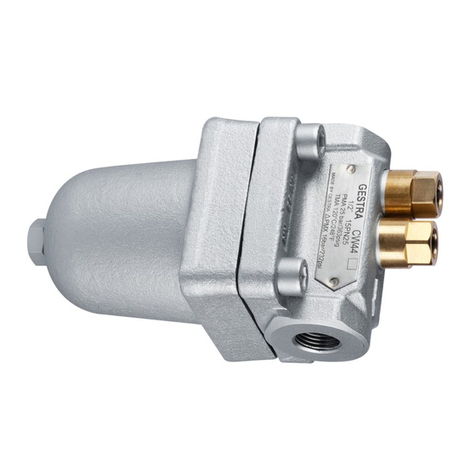
GESTRA
GESTRA CW 44 User manual
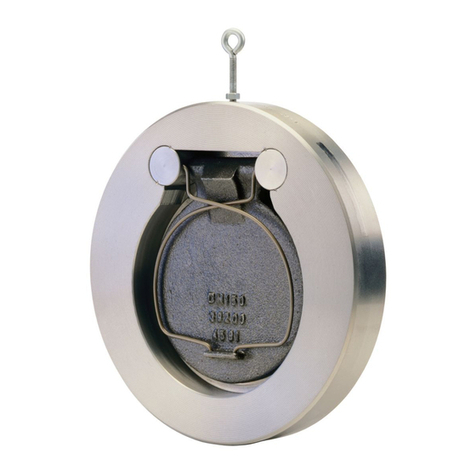
GESTRA
GESTRA CB 26 User manual
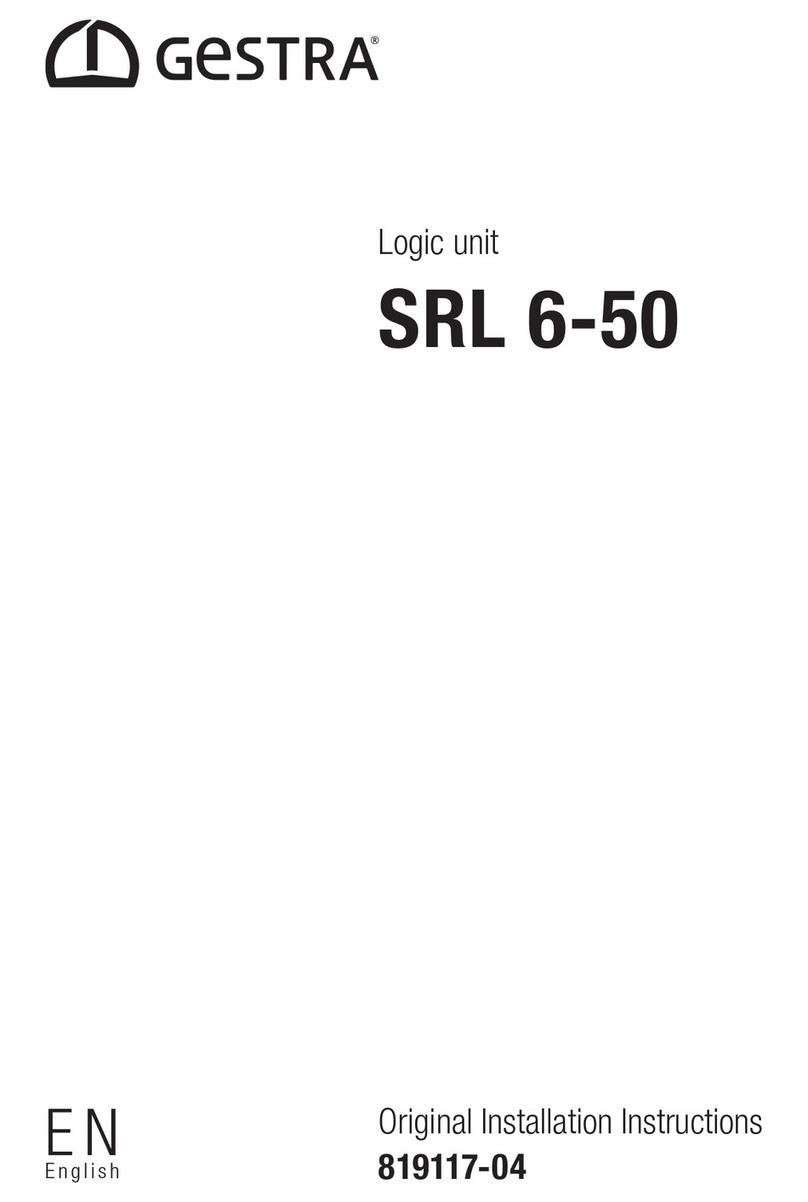
GESTRA
GESTRA SRL 6-50 User manual
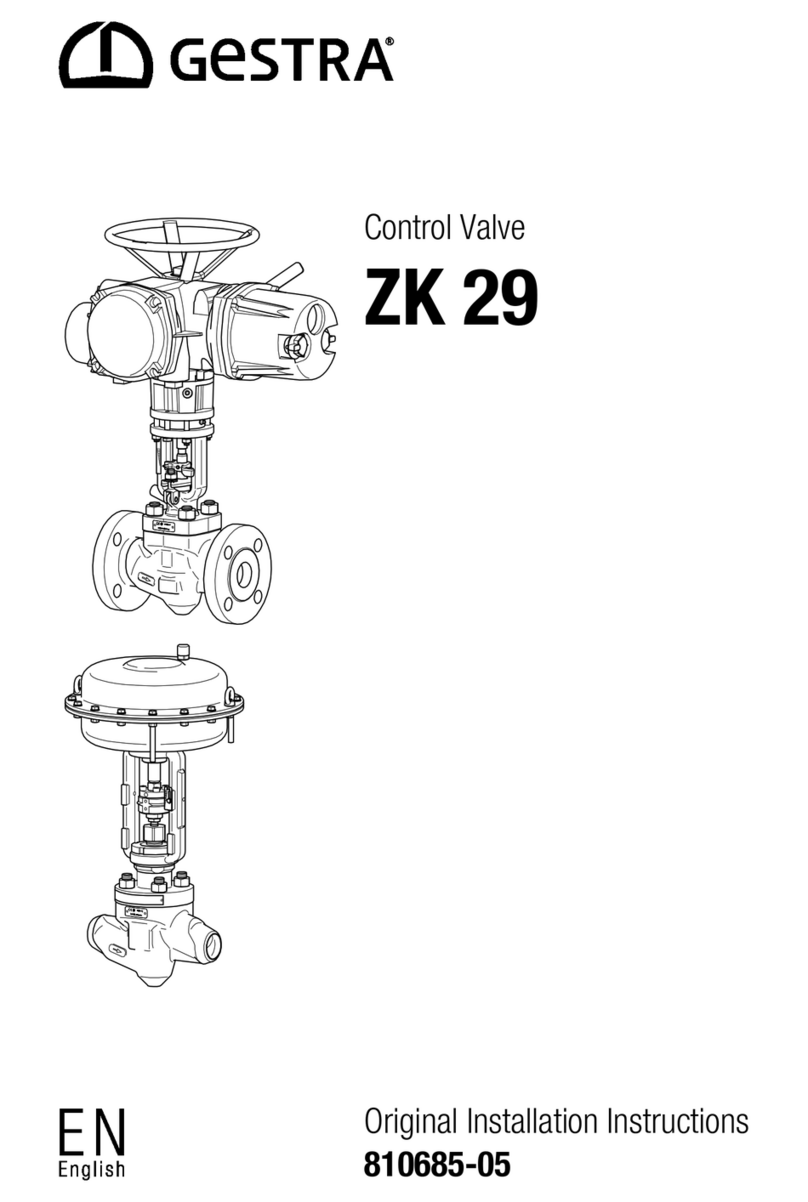
GESTRA
GESTRA ZK 29 User manual
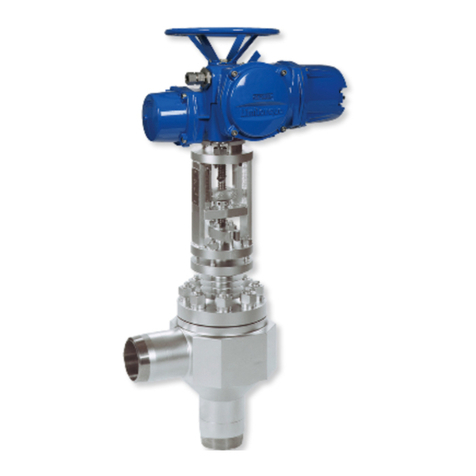
GESTRA
GESTRA ZK 213 User manual
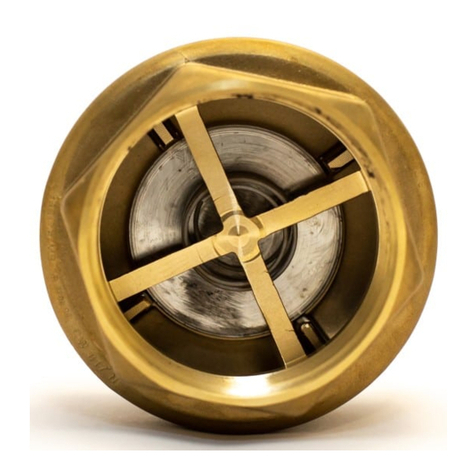
GESTRA
GESTRA RK Series User manual
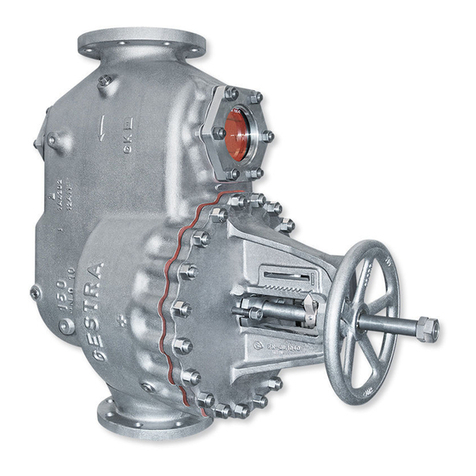
GESTRA
GESTRA GK 11 User manual
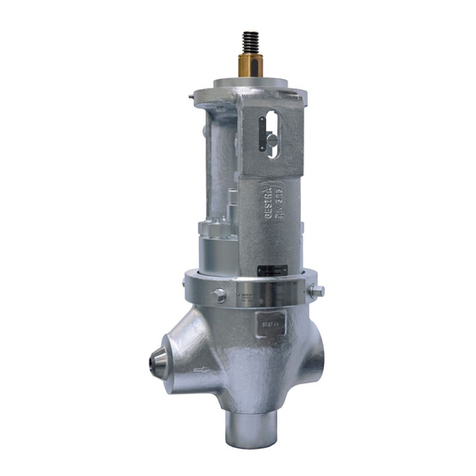
GESTRA
GESTRA ZK 313 User manual
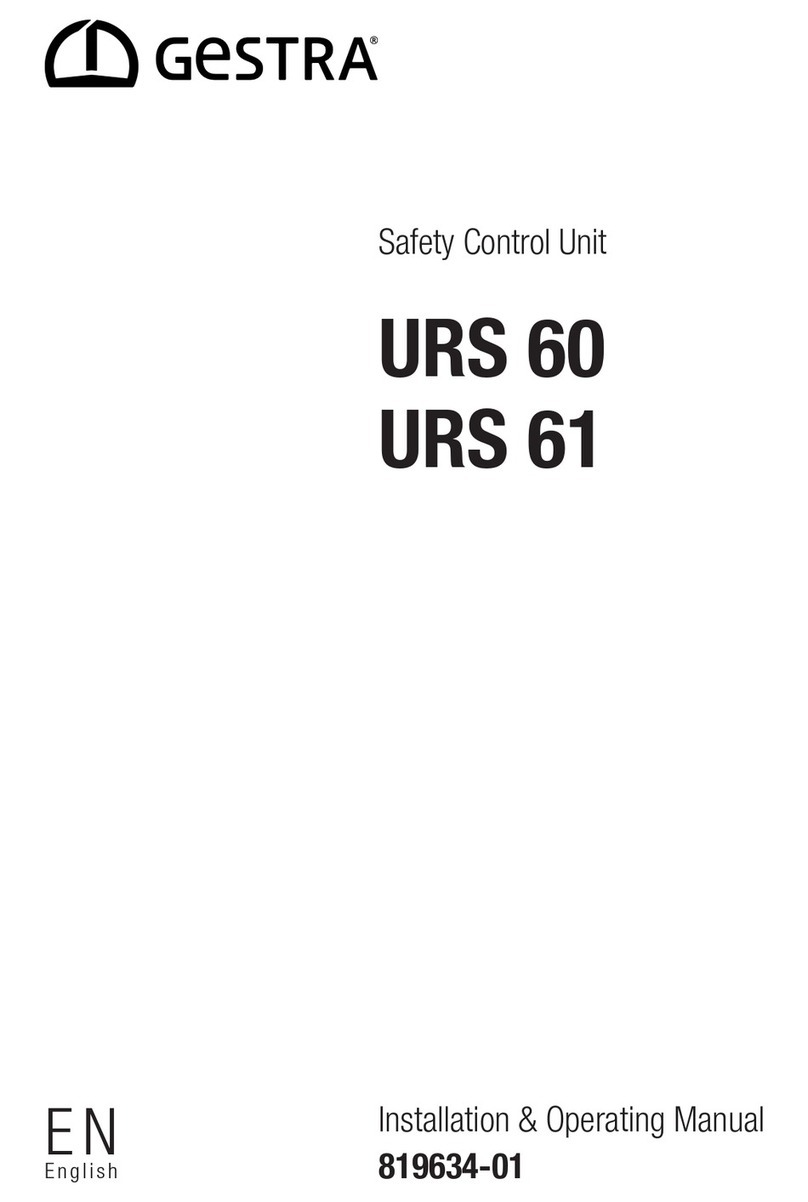
GESTRA
GESTRA URS 60 Installation instructions

GESTRA
GESTRA AK 45 User manual

GESTRA
GESTRA UNA 13P User manual
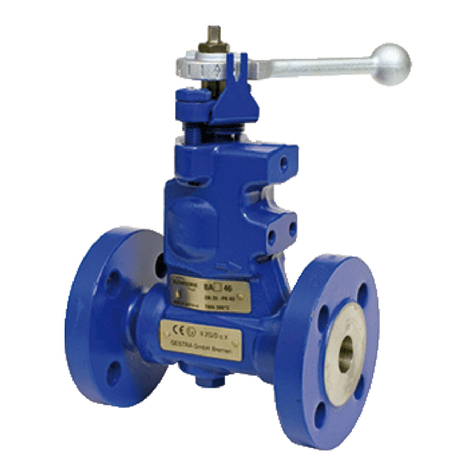
GESTRA
GESTRA BA 46 User manual

GESTRA
GESTRA URS 60 User manual
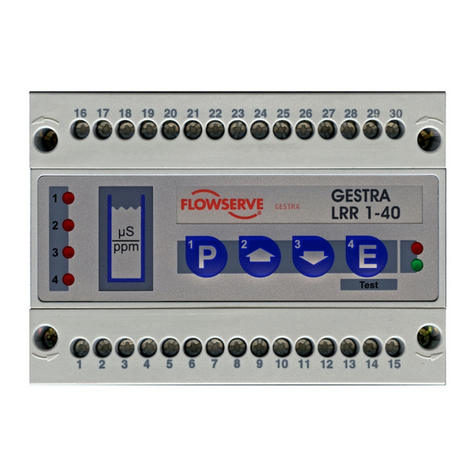
GESTRA
GESTRA LRR 1-40 User manual

GESTRA
GESTRA BB 1 Series User manual

GESTRA
GESTRA Gestramat CW 41 User manual
